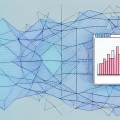Standard deviation is an important calculation used by investors to gauge the volatility of their investments. It measures the variability of a data set and provides guidance on the maximum amount of losses or gains an individual should take from a given investment. Annualizing standard deviation is a process that takes this volatility and spreads it over a longer time period. This can help investors compare the different volatility levels of investments over different timeframes, making it an invaluable tool for financial planning and risk analysis.
What is Standard Deviation?
Standard deviation is a measure of how widely dispersed a data set is from its mean or average. It is the most commonly used measure of variability in statistics and is represented by the Greek letter sigma (σ). Standard deviation is calculated by taking each observation and finding the distance it is from the mean. Those distances are then squared, totaled and divided by the number of observations. Standard deviation is used as a measure of volatility because it shows how dispersed a data set is and helps to identify outliers. When investors are planning, they use standard deviation to measure the maximum drawdown they could experience in a given investment.
Standard deviation is also used to measure the risk associated with a particular investment. By calculating the standard deviation of a portfolio, investors can determine the amount of risk they are taking on. The higher the standard deviation, the more volatile the portfolio is likely to be. This can help investors decide whether or not a particular investment is suitable for their risk tolerance.
Why is Annualizing Standard Deviation Important?
Annualizing standard deviation can be an important tool for investors in some circumstances. For example, if an investor is looking at two investments – one with a high level of volatility over a one-month period and one with a low level of volatility over a ten-month period – annualizing the standard deviation allows them to compare both of them on the same plane. Without it, the investor might assume that the high volatility investment was riskier, but when annualized, it may be shown that the ten-month investment actually has a higher level of volatility.
How to Calculate Standard Deviation
Calculating standard deviation for any set of data is quite straightforward. First, the mean or average of the data set must be determined. To do this, add up all of the values and divide by the number of observations. Next, each individual observation within the data set must be subtracted from the mean and squared. Then, these values must be summed up and divided by the number of observations in the data set. Finally, take the square root of this result to find the standard deviation.
Steps for Annualizing Standard Deviation
Annualizing standard deviation is slightly more involved than calculating it for a single data set. To begin, separate each data set into 12 equal-sized samples – one for each month of the year. Then, calculate standard deviation for each sample using the steps above. Calculate an average for each standard deviation, and multiply that average by 12 to get the annualized standard deviation. The final annualized standard deviation will provide insight into the volatility of each data set over one year’s time.
Advantages of Annualizing Standard Deviation
Annualizing standard deviation provides an easy way for investors to compare different investments on a level playing field. By reducing variation in different time frames and providing a yearly view of volatility, investors can make better decisions on where to invest. It also gives investors a better understanding of which investments are more likely to be more risky or volatile over a longer period of time.
Disadvantages of Annualizing Standard Deviation
Annualizing standard deviation can create some challenges as well. In some cases, it can distort short term volatility levels, hiding more extreme swings in prices and providing an overly optimistic view of a given investment. It can also be difficult to accurately predict future standard deviation with annualized numbers because of shifts in markets, changes in investor behavior, or other unforeseen events that can alter volatility.
Common Misconceptions about Annualizing Standard Deviation
One common misconception about annualizing standard deviation is that it does not account for correlations between observations or other relationships in a data set. In actuality, annualizing standard deviation does take relationships into account when calculating yearly volatility; it just takes them into account in different ways than traditional methods such as correlation coefficients or cross correlations.
Examples of Annualizing Standard Deviation
To illustrate annualizing standard deviation in practice, consider an investment that fluctuates widely over a twenty-four month period. When evaluating this investment, standard deviation might look like it would return unsafe levels of volatility over a long-term basis. However, when that same investment is annualized, it might show that the investor could expect fairly moderate levels of volatility or risk when looked at on a yearly basis.
Annualizing standard deviation is a useful tool for investors that want to assess their investments over long-term periods. By taking short-term fluctuations and spreading them out over twelve months, investors can get more accurate readings on their volatility exposure and make better decisions when it comes to managing risk.





